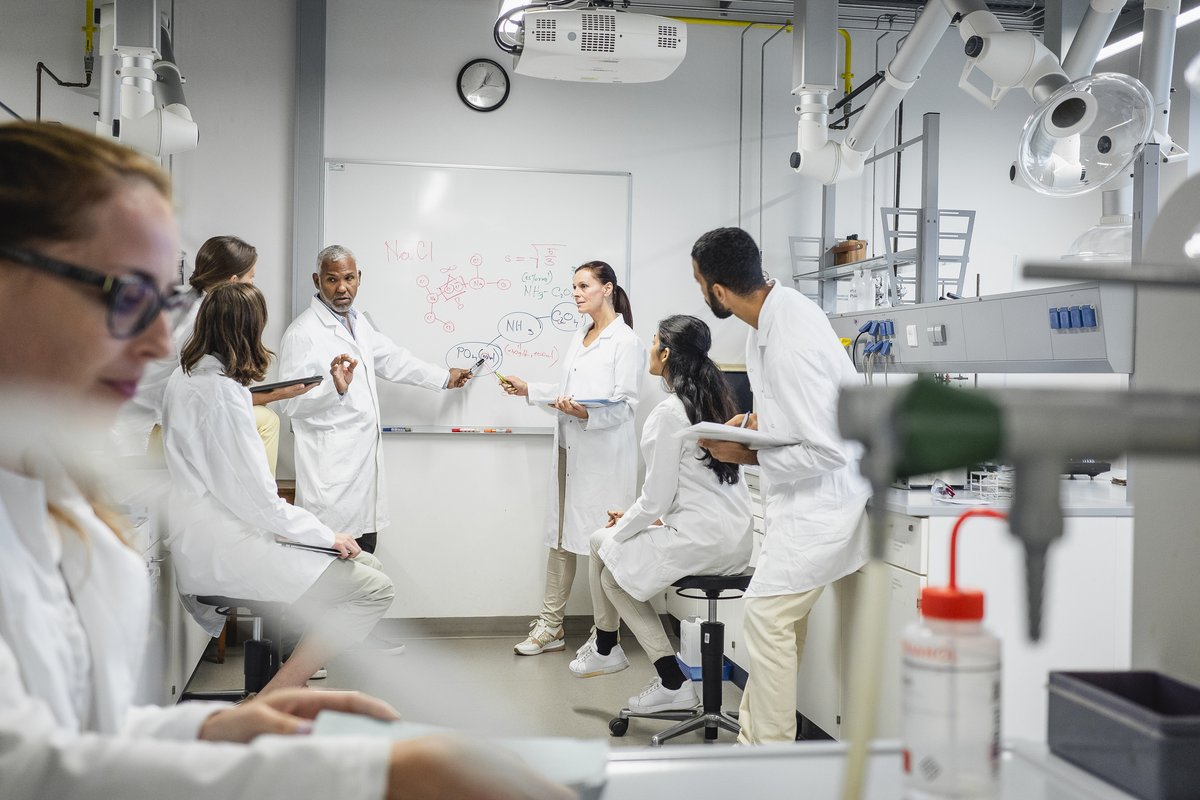Last Updated on November 20, 2025 by Saadet Demir
Cancer is a big challenge in medicine, but innovative breakthroughs are changing how we treat it. Even with big steps forward, is there a cure for cancer yet? Not completely, but ongoing advancements in therapies and treatments are bringing us closer every day.

But, more people are surviving cancer than before. The American Cancer Society says more money is going into cancer research. This has led to better treatments and care for patients. Places like Liv Hospital are pushing the boundaries of research, bringing us closer to a cure.
In 2024, cancer treatment is more complex than ever. It’s not just one disease but many related ones. Each has its own challenges and characteristics.
Cancer has over 100 types, each named after where it starts. This makes finding a single cure hard. The American Cancer Society says we need to understand each cancer’s genetics to treat it well.

There’s been a big leap in cancer treatment. The 5-year survival rate in the US is now 69% for those diagnosed between 2014 and 2020. This shows how early detection and new treatments are helping.
“The progress we’ve made in cancer treatment is undeniable, but there’s much work left.”
Expert Opinion
Today, treatments mix surgery, radiation, chemotherapy, and new methods like immunotherapy. The right treatment depends on the cancer type, stage, and genetics, plus the patient’s health. As research goes on, we expect better treatments with precision medicine and new tech.
In summary, we’ve made big steps in fighting cancer. But the fight for a cure goes on. With ongoing research and new tech, we hope to see better survival rates and quality of life for cancer patients.
Advances in cancer research are making us rethink what a “cure” means. A cure means no more cancer, but cancer is complex. This makes finding a cure hard.
In cancer care, a “cure” means no cancer is found, and it won’t come back. But, what counts as a cure can change based on the cancer type and treatment.
Complete remission is a step towards a cure. It means no cancer is seen in tests and scans. But, cancer can come back, so “cure” is used carefully.
Some cancers are easier to treat than others. For example, testicular cancer and Hodgkin lymphoma have high cure rates if caught early.
Immunotherapy has helped increase cure rates for some cancers. It has led to over 150 FDA approvals, including 17 in 2024.
Even with progress, some cancers are hard to beat. Pancreatic cancer and glioblastoma have few treatment options and low cure rates.
Scientists are working on new treatments. They hope to find better ways to fight these tough cancers.
Cancer care is on the verge of a big change. Five key treatments are changing how we fight this disease. Research at Mass General Brigham shows big advances in 2025, including better treatments and early detection.
Immunotherapy is a strong tool against cancer, with over 150 FDA approvals. It uses the body’s immune system to fight cancer cells. Checkpoint inhibitors and CAR-T cell therapies are leading the way, giving hope to those with hard-to-treat cancers.
Pembrolizumab, an anti-PD-1 therapy, is a great example. It’s shown to work well against melanoma and lung cancer.
Precision medicine and genomic profiling are changing cancer treatment. They let doctors tailor treatments to each patient based on their tumor’s genes. This leads to better treatments and outcomes.

Cell-based therapies, like CAR-T cell therapy, are being tested for solid tumors. Early trials show promise, encouraging more research and development.
Combination therapies are key in cancer care. They use different treatments together. New drug delivery systems, like nanoparticles, are also being developed. They aim to make treatments more effective and reduce side effects.
As we keep exploring these new treatments, the hope for a cancer cure grows. The progress we’ve seen in recent years shows the power of medical research and innovation.
The search for a cancer cure is getting a boost from new technologies. These advancements are changing how we treat cancer, giving hope to patients and doctors.
Artificial intelligence (AI) is now key in finding and treating cancer. AI looks through lots of medical data, finds patterns, and helps doctors plan better treatments. This means doctors can spot cancer early, which helps with treatment.
Liquid biopsies and ctDNA monitoring are new tools in cancer care. They check for cancer markers in blood, helping diagnose and track treatment. This could change how we manage cancer, giving us real-time info on tumors.
Spotting cancer early is key in the fight against it. New imaging and biomarker discoveries help find cancer sooner. This means patients can get treatment faster, which can save lives.
Experts say big changes in cancer treatment are coming by 2025. Thanks to AI, precision medicine, and liquid biopsies, we’ll be able to diagnose and treat cancer better. This brings us closer to finding a cure.
As we keep improving these technologies, finding a cancer cure seems more possible. With innovation, we can make progress faster and help patients all over the world.
The search for a cancer cure is pushing medical science forward. Even though finding a cure is a big challenge, we’ve made a lot of progress. This progress helps us understand and treat different types of cancer better.
Liv Hospital is leading the way in cancer care. They offer top-notch, all-around healthcare. New treatments like immunotherapy, precision medicine, and cell-based therapies are giving patients new hope.
New technologies like AI, liquid biopsies, and early detection tools are on the horizon. These advancements could greatly improve how we fight cancer. They might even help us find a cure.
Our quest for a cancer cure is far from over. But with more research and new ideas, we’re hopeful. Our goal is to give patients the best care possible. This will help us get closer to finding a cure for cancer.
Cancer isn’t curable for everyone yet. But, new treatments have made survival rates much better. The American Cancer Society says the 5-year survival rate for all cancers in the US is now 69% for those diagnosed between 2014 and 2020.
In oncology, a “cure” means all cancer cells are gone. The patient is then cancer-free. But, what counts as a “cure” varies. It depends on the cancer type, stage, and how well the treatment works.
Finding a single cure for all cancer is hard to predict. But, research and new treatments like immunotherapy and precision medicine offer hope. These advancements might lead to cures for some cancers soon.
Some cancers, like testicular and thyroid cancer, and some leukemia types, have high cure rates. But, other cancers are harder to treat. New treatments are helping, but we need more research for a universal cure.
We’re getting closer to better cancer treatments. Advances in understanding cancer and new treatments are improving survival rates. While we’re not there yet, research and new technologies like AI are speeding up our progress.
Immunotherapy, precision medicine, cell-based therapies, and combination treatments are promising. They’ve shown great promise in improving cancer outcomes. Ongoing research is expected to bring even more breakthroughs.
Immunotherapy has been a game-changer for some cancers, with over 150 FDA approvals. It’s not a cure for all, but it’s making a big difference. Research is exploring its use in more cancer types.
Cancer treatment will change a lot, thanks to new technologies. AI, liquid biopsies, and early detection tools will lead to more personalized treatments. This will help improve outcomes for cancer patients.
Subscribe to our e-newsletter to stay informed about the latest innovations in the world of health and exclusive offers!